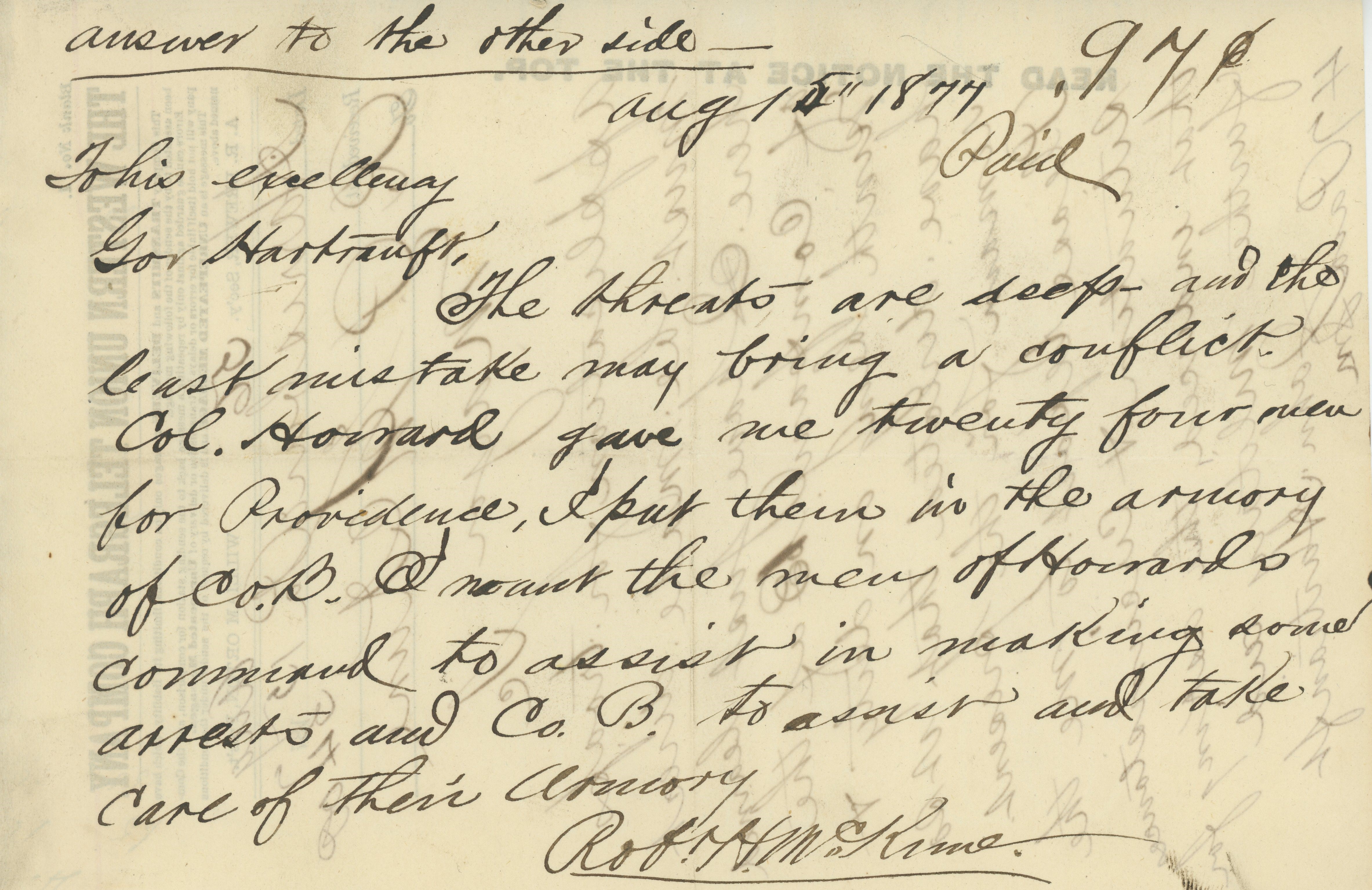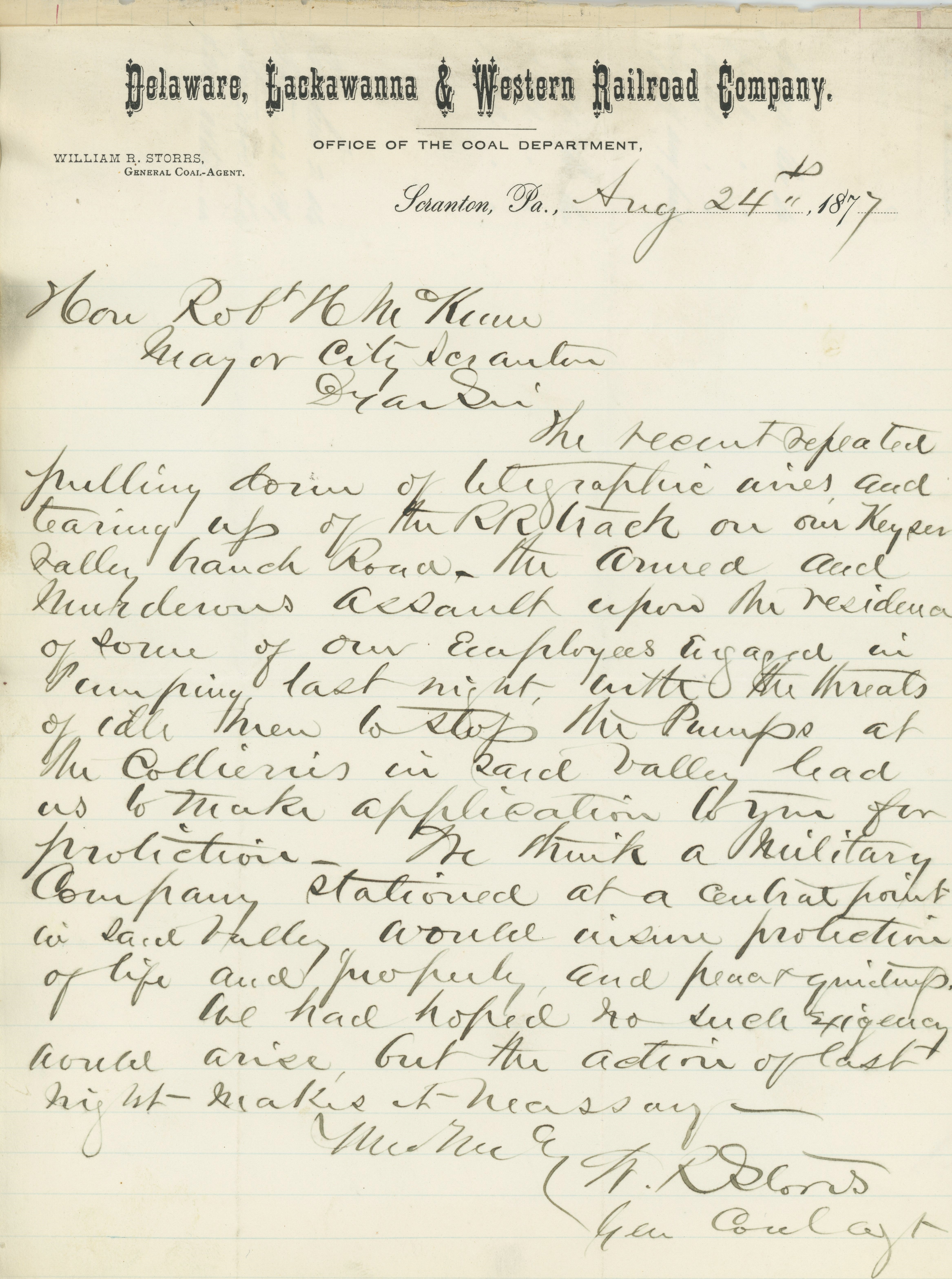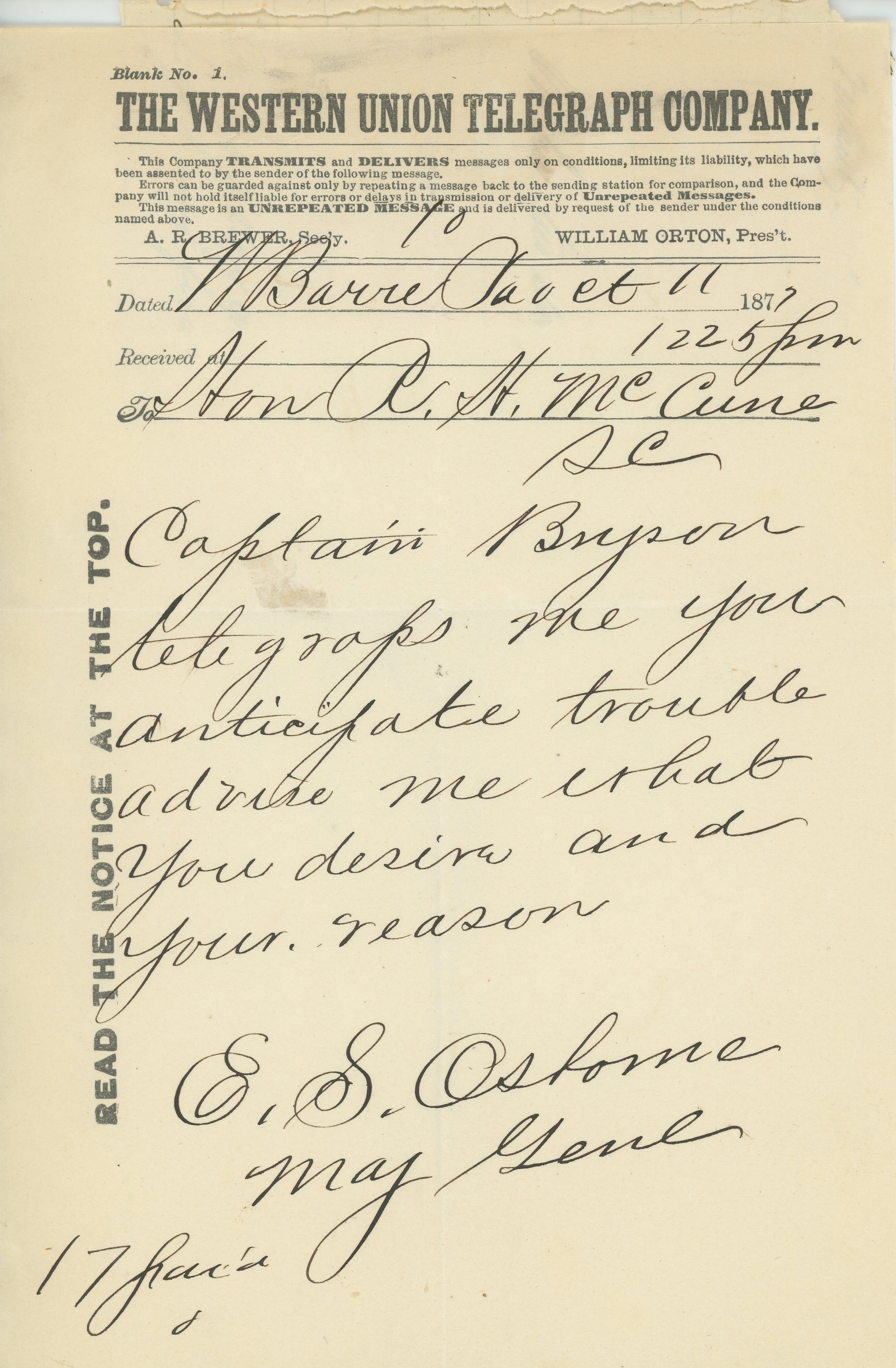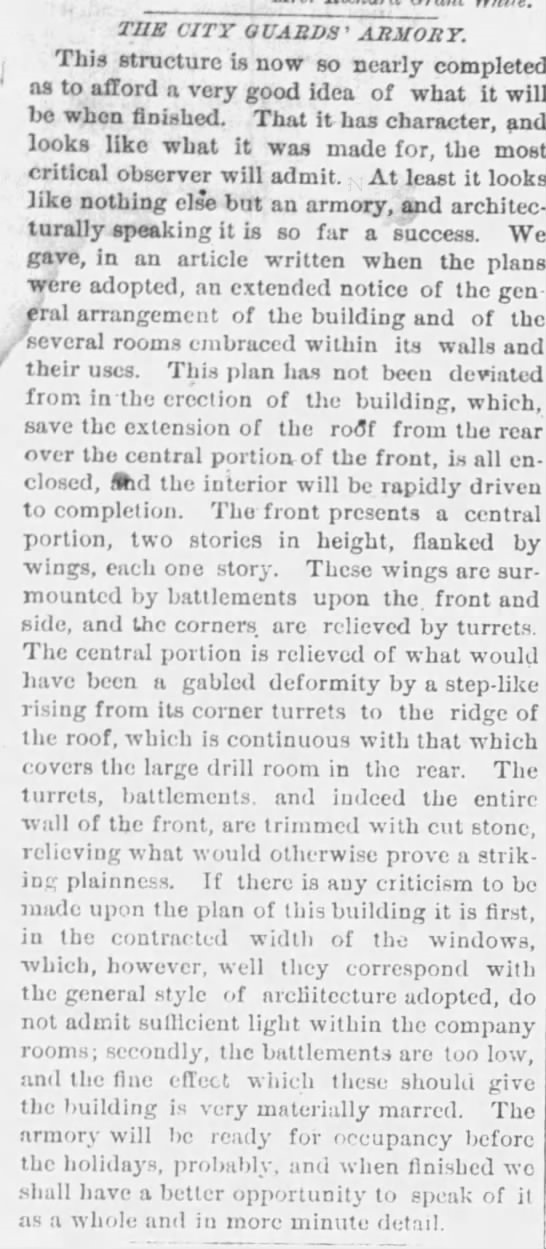The Great Railroad Strike of 1877 and Mayor Robert H. McKune: Continued Troubles (Series: Part 10)
August 15, 2020
Although the events of August 1st through August 9th were the height of the activity surrounding the Railroad strike, unrest would continue. Strikers continued to threaten destruction of property, or to harm those who returned to work until their demands were met. The military presence in the city shifted from trying to calm the strikers, to actively protecting those that were working and their work places. Multiple letters found in Mayor McKune’s documents show the continued strikes and fear of violence.

Aug 15th 1877 .97₵ Paid To his excellency Gov Hartranft, The threats are deep and the least mistake may bring a conflict Col. Howard gave me twenty four men for Providence. I put them in the armory of Co. B. I need the men of Howard’s command to assist in making sound arrests and Co. B to assist and take care of their armory. Robt. H. McKune

Scranton Pa Aug 24th 1877 Hon Robt H McKune Mayor City Scranton Dear Sir The recent repetitive pulling down of the telegraphic wires and tearing up of the RR track on our Keyser Valley Track Road. The armed and murderous assault upon the residence of some of our employees engaged in pumping last night with the threats of idle men to stop the pimps at the Collieries in said Valley lead us to make application to you for protection. We think a military company stationed at a central point in such valley would insure protection of life and property peace & quieting. We had hoped no such experience would arise but the action of last night makes it necessary. W.R. Storrs

Dated: Wbarre Pa Oct 11 1877 Received: 12:25pm To: Hon R. H. McCune Sc Captain Bryson telegraph me you anticipate trouble advise me what you desire and your reason E.S. Oborne May Genl 17 Jan
During the prolonged unease of the strikes, citizens of Scranton decided to create a permanent military presence in the city. The Scranton City Guard was comprised of over one hundred men from the city that would help keep the city safe and peaceful. To house the guard, the Scranton Watres Armory was constructed. It would not be finished until January 31, 1878.

The Scranton Republican, December 12, 1877
After weeks of unrest, the strikes in Scranton finally came to an end on October 16, 1877. The miners agreed to return to work without any victories. Their wages would continue to be the reduced rate that originally resulted in striking. By November, the city would no longer have the presence of troops from the state or federal level.

